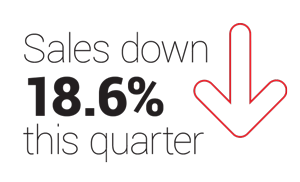Trending
High-end homes fail to get their asking prices
Fewer new condominiums expected to come on the market as conditions deteriorate

In 2015, buyers engaged in fierce bidding wars for Manhattan homes, ready to pay thousands more than the seller was asking. A year later, that frenetic game of inverse limbo (how high can you go?) seems to be slowing down.
Case in point: In the third quarter of 2016, fewer homes were sold above the initial asking price, according to Douglas Elliman’s latest market report.
Only 17.4 percent of residential sales were above the listing price — compared to 31 percent at the same time last year, Jonathan Miller, the author of the Elliman report and CEO of Miller Samuel, the appraisal firm, told The Real Deal.
The increase in homes for sale — both resale and new — has led to a weakening in the market, Miller said. The number of homes being listed reached 5,290, an 8.2 percent year-over-year increase. The spike is modest compared to the second quarter’s infusion of 25 percent more resale homes, but it shows that the supply is steadily growing. The number of newly built homes for sale rose 27.2 percent from this time last year, reaching 973 listings in the third quarter.
Demand, however, is not quite matching supply. This quarter saw a precipitous drop in sales, falling 18.6 percent from the same  time last year. But Miller pointed out that the market was “distorted” over the last few years by unusually high sales volumes — now, it’s simply correcting itself.
time last year. But Miller pointed out that the market was “distorted” over the last few years by unusually high sales volumes — now, it’s simply correcting itself.
“It’s still well above sales levels of the last decade,” Miller said. “Sales activities are still pretty high.”
In a separate report, the Corcoran Group noted that while there’s an oversupply of inventory on the high end of the market, there still aren’t enough homes for sale on the lower end to meet the demand from buyers. As TRD reported recently, developers are increasingly targeting the $1 million-to-$3 million market, which has a greater number of buyers.
And a different survey of the new-condo market sees the spigot being shut off.
The number of cranes above the Manhattan skyline — the unofficial barometer of construction activity in the city — could soon start to dwindle. That’s because after a three-year climb, the number of condo units proposed, under construction and on the market has plateaued, according to a new analysis by The Real Deal.
Moreover, the existing pool of condos could shrink even more as bank financing dries up.
“Here’s the harsh reality of where we are. Based on the capital markets, some very, very large percentage of the [pipeline] projects are not going to be financeable,” said Tim Crowley, director of new development for the residential brokerage CORE. “If you don’t have a construction loan today and you’ve acquired land, there’s a very good chance you’re not going to find [financing].”
Indeed, it’s become increasingly challenging for even the most established developers to obtain financing in a market with a glut of new product, particularly the large, expensive luxury homes that have come to define this cycle in the Big Apple.
Some 14,500 condos are expected to hit the Manhattan market between 2015 and 2017, which at the current absorption rate (the time in which homes sell in a given area during a given period) is between four and six years of excess supply.
Miller offered this perspective: Developers have been building bigger homes in this cycle. “While the number of units is up since the financial crisis, it’s nowhere near the last boom,” he said. “My rationale is that the units that they’re building are significantly larger than the last cycle, on average. So you have fewer units and larger square footage.”
But if banks push developers toward smaller, more moderately priced apartments, the total supply of condos could actually rise.
Crowley said that’s exactly what he thinks developers will do. “The cheaper an apartment is, the more people can afford it. If I take a $10 million four-bedroom and I make it $7 million, the $10 million buyer might still be out there, but I capture the $7, $8, $9 and $10 million buyer,” he said.
And where is the most demand? “Today, yesterday and the day before, it’s always the two-bedroom,” Crowley said.
—Adam Pincus contributed reporting




